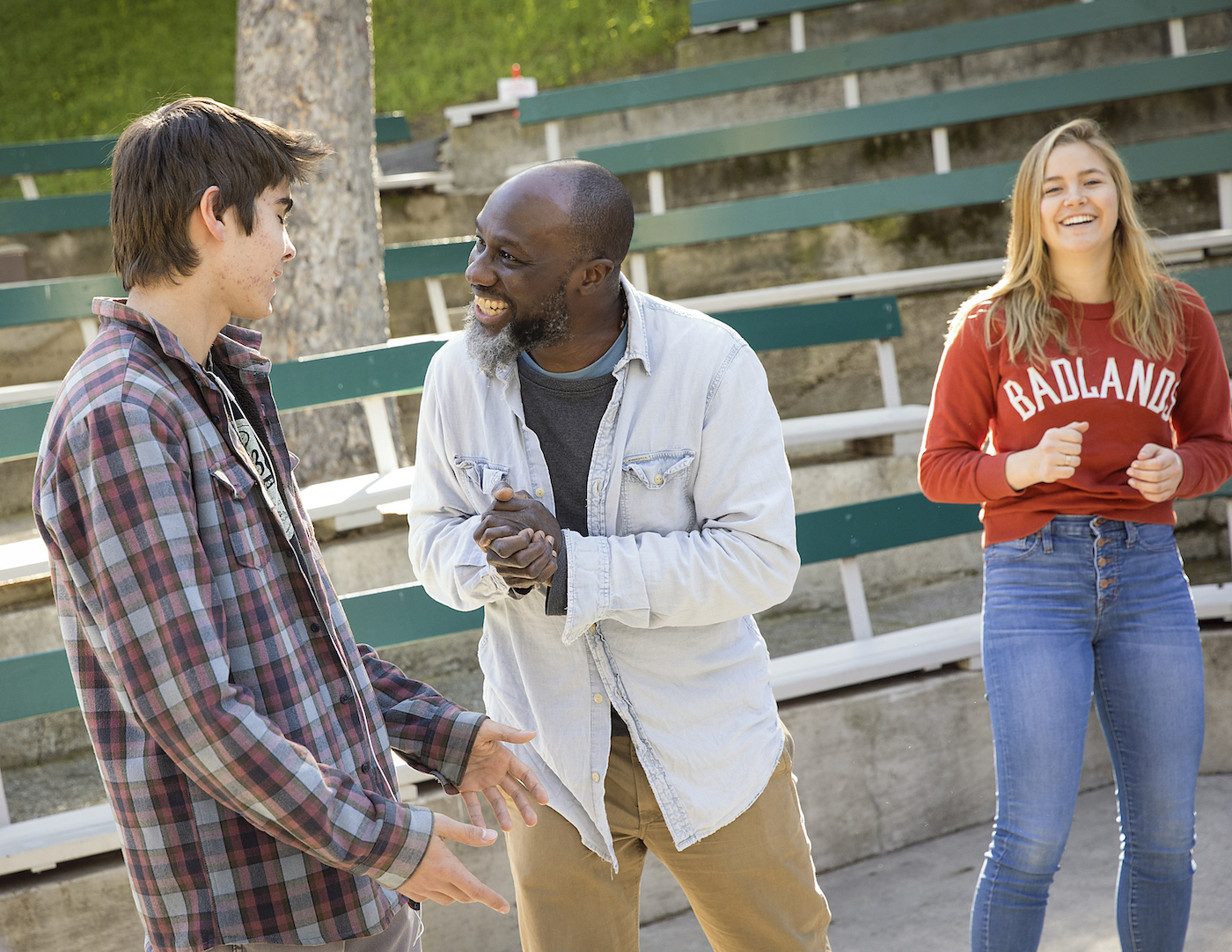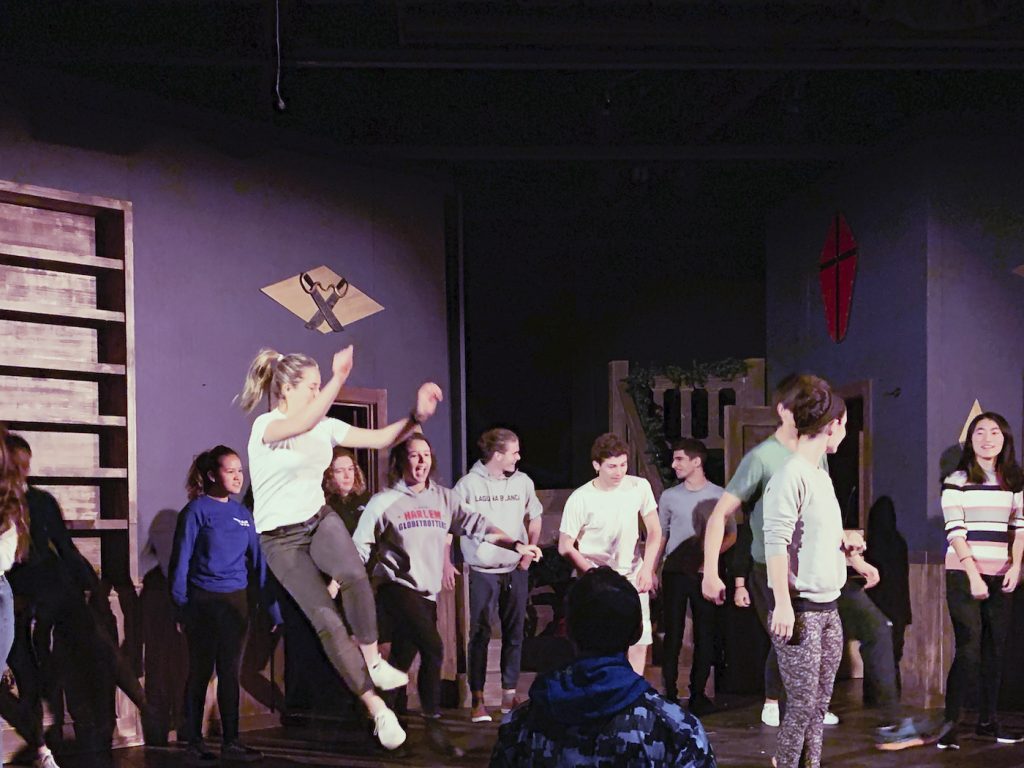Laguna Blanca School’s Library Dances Program

As part of their Advanced Placement English studies, the students in Laguna Blanca English teacher Charles Donelan‘s class integrate the art of dance into their study of Shakespeare’s Twelfth Night in an annual program titled, Library Dances. The students study with the State Street Ballet, various musicians, and newly added this year, artist-practitioner from Shakespeare’s Globe Theatre in London, Tas Emiabata, for a full quarter culminating in a school-only performance on March 13.
I interviewed Charles on this unique teaching method:
Q. In sum, what is the integrated approach about?
A. This is just one piece of a comprehensive program here at Laguna Blanca that teaches students to solve problems that require multiple skills. It is a project-experiential based learning that is being done across all disciplines in secondary education in the U.S. It works at Laguna Blanca only because we have leadership that is promoting this type of learning and supporting it from the top down, I can’t say enough about Rob Hereford, Head of School, who is oriented toward high achieving academics. And in my class, the students do this in addition to learning English for the AP English exam, and it’s important to say that last year half of my students had perfect AP scores.
How/when did you arrive at the concept of Library Dances to teach Shakespeare? Is this a pilot concept?
The originator of Library Dances is Cecily MacDougall, who is the outreach coordinator at State Street Ballet and a dancer/choreographer. The program takes place in a number of schools other than Laguna Blanca, including Santa Barbara Junior High. Our relationship with the program began in the fall of 2014 with A Midsummer Night’s Dream, then The Scarlet Letter 2015, and The Great Gatsby 2016. It’s really Cecily’s concept, although at Laguna Blanca we have gone perhaps a little deeper with it since our students are juniors and seniors in high school. I won’t necessarily do Library Dances every year. Last year, for example, we took time off, but I ended up applying the concept to an interdivisional project that put high school seniors and middle schoolers together in a performance that merged theater with aerial dance. The choreographer for that was Ninette Paloma, and the piece was called “Jane Air.” The performance format for Twelfth Night follows a script I created with student-director Caetano Perez-Marchant and a student choreographer Kiki Tolles trading ideas about staging and the dance numbers alternate with short scenes of spoken theater.
Is teaching Shakespeare in classic pedagogy not working?
Shakespeare can certainly still be taught effectively using more traditional methods, but there’s a different kind and level of engagement available when students perform on a stage in front of a live audience. All the students in Twelfth Night will also take reading quizzes and write essays, so it’s not like we have replaced what has been done in the past. Project-based learning is more about augmenting the standard curriculum than doing away with it. Twelfth Night is on the requirements for AP English Language and Composition.
How did you decide on ballet versus other forms of dance, or is that just for this particular work of literature?
It’s a ballet because we work with State Street, and they send us not only Cecily as choreographer, but also five of their best dancers as co-creators who appear onstage alongside the students. I like the pairing of ballet and Shakespeare because they both require tremendous discipline, and they both deliver lasting rewards. Oh yes there’s lots of music, both classical and contemporary.

What was the feedback from the professional ballet dancers about working with your students?
The dancers really enjoy working with the students. They see this as an opportunity to create a new young audience for their art form, and they also like the energy and high spirits. Many of the dancers are not much older than the students, so their memories of high school are fresh. The State Street Ballet company dancers this year were Amara Galloway, Kate Gonzales, Courtney Hanaway, John Piel, and Nick Topete.
Shakespeare’s Globe artist Tas Emiabata was also brought in for acting coaching…?
What really pushed this year’s Library Dances program into the next level was the grant from Sara Miller McCune and the Leni Fund for the Shakespeare Globe Practitioner artist Tas Emiabata to be here, and the students received coaching for acting as well as the dance from State Street Ballet, and he was fabulous. The Globe artist/practitioner program is very strong, and I think their method is brilliant.
You attended the SB Unified teacher training with the Globe Theatre… Tell us about that.
It was exciting. I don’t get to spend much time with teachers from other schools, and the quality of instruction at the public junior highs and high schools in SB is top notch.
How do you assess the knowledge the students acquired by this multi-disciplined approach?
We will go through two weeks of rigorous traditional assessment following the performance. Students will write AP-style rhetorical analysis essays and take reading quizzes to make sure they are thoroughly familiar not only with the text, but also with the context of Shakespeare’s theater and his world. I am also constantly taking notes during the rehearsals and the performance that I will use in writing to my students’ parents about their learning, and to colleges when it comes time for letters of recommendation. These observations of the students as they interact with their peers and the professional dancers are extremely useful when it comes to describing what’s special about each individual. The process allows for multiple styles of learning and different rates of progress. Often, it’s the students who are most reluctant at the beginning who end up progressing the most.
What is the end game for the students?
Some of them will use this experience as the point of departure for auditioning for plays in the future. All of them will take away indelible memories, both cognitive and physical, of what it was like to perform on stage. Ultimately, the most important benefit is the bonding experience. Because everyone takes part, even those with no prior performing experience, the production becomes something they all share. It leaves our students with a powerful group identity that’s not like anything else they do in high school.
411: Laguna Blanca is a not-for-profit EK-12 co-educational, college preparatory day school. lagunablanca.org







You must be logged in to post a comment.